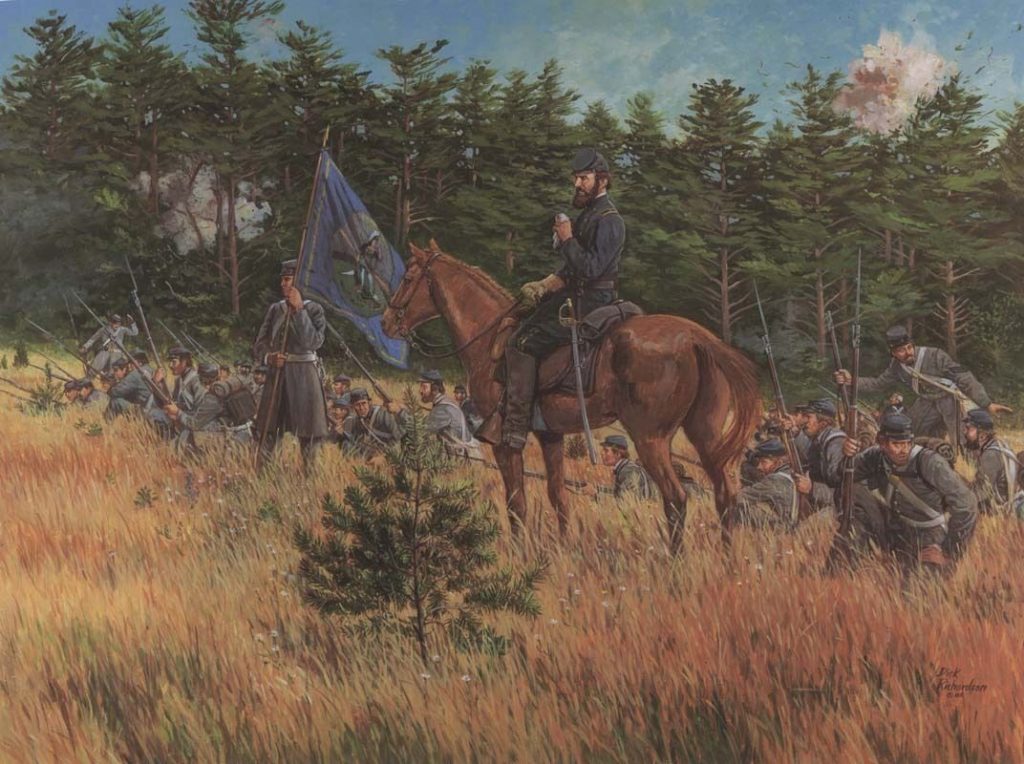There Stands Jackson Like Stonewalls? A Union Soldier Speculates on Jackson’s Famous Nickname
The story of how Brig. Gen. Thomas J. Jackson received his famous nickname atop Henry Hill on July 21, 1861, is well-known to Civil War enthusiasts today. For Southerners, they knew it too, and quickly after the Battle of First Manassas ended. The story first appeared in the Charleston Mercury on July 25, 1861, and soon appeared in other newspapers across the South. “Stonewall” Jackson’s legend grew.

By 1862, Jackson’s legend was growing in more places than the Confederacy. The origin story of the war’s most famous nickname was not as widely known in the United States, leaving Northerners and Union soldiers to speculate. On November 7, 1862, while encamped near Rectortown, Virginia, in Fauquier County, Pvt. George Washington Beidelman of the 71st Pennsylvania Infantry thought he found an answer to the origin of Jackson’s nickname.
In the cold, Beidelman and his Army of the Potomac comrades burned fence rails to stay warm, “but they are getting scarce too in some places, for the fences in this part of the country are nearly all stone walls,” he discovered. “These, no doubt, have given to rebel General Jackson the sobriquet which he at present enjoys; for they afford a splendid protection to infantry especially in a fight; and the cunning general no doubt avails himself of all their advantages whenever he gets a chance.” Beidelman took Jackson’s nickname literally. He was misguided in this assumption, and “Stonewall” Jackson continued to beguile Beidelman and his comrades until May 1863.
Strange that this leaves out the real story of the nickname. Jackson refused to budge before an enemy onslaught (the place where his statue stands today at Antietam) and someone of his troops shouted out in the chaos “There stands Jackson like a stone wall!” It has also been alleged that it was actually said by a disgruntled commander of another unit who felt Jackson hadn’t moved at a crucial time (for the other commander) that called for action on his part. Even if at all true, that version has been ignored by everyone since 1861.
I assume you mean where his statue stands today at Manassas?
However, that statue at Manassas isn’t located on the spot where the Jackson story actually unfolded. It was placed there because it was the most prominent spot in that sector of the battlefield, easily visible. It’s actually in front of Jackson’s position though; had he been there, he would have been shot down by his own artillery support. His men occupied the reverse slope of the ridge the statue is on.
Here’s more on the Jackson story at Manassas courtesy of a video I did with Rob Orrison and Bill Backus for Prince William County (before Kevin worked for them!). Our video takes us to a few spots on the Manassas battlefield to unpack Jackson’s story on the landscape.
https://emergingcivilwar.com/2018/07/21/telling-stonewall-jacksons-story-atop-henry-house-hill/
Richard Taylor stated that no nickname could ever have been more ill-fitting for Jackson than, ‘Stonewall’; for he was constantly ‘swooping and moving like an eagle in battle’, (or words to that effect.
Due to the eerie amount of similarities they shared, despite being born about 75 years and half of the globe apart, I always examine Jackson in comparison to his Aboriginal Australian counterpart, Pemulwuy of the Gadigal Peoples’ of the Eora Nation, (around what is now the harbor and city of Sydney, Australia).
I call Jackson, ‘The Pemulwuy of the South’, and Pemulwuy, ‘The Stonewall Jackson of Australia’s Aboriginal Peoples’.